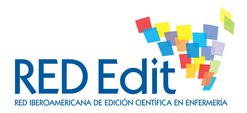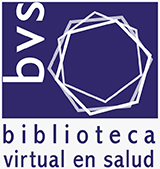ESTILO Y EFECTIVIDAD DEL ENFRENTAMIENTO DE LAS ESPOSAS DE LOS PACIENTES CON INFARTO AGUDO DEL MIOCARDIO
DOI:
https://doi.org/10.29393/CE4-5EELP10005Palabras clave:
Enfrentamiento, estrés, esposasResumen
Un infarto agudo del miocardio representa un significante estresor tanto para el paciente como para la familia y en especial para la esposa. El propósito de esta investigación es analizar los métodos o estilos de enfrentamiento que son usados por las esposas de los pacientes en relación con algunos factores demográficos, socioculturales, psicológicos y fisiológicos.
En una muestra de 37 esposas de pacientes con infarto agudo del miocardio, se investigó la relación entre factores de personalidad, edad, educación, apoyo social y otros, con los diferentes métodos o estilos de enfrentamiento y la efectividad de estos métodos. Los resultados indicaron que los métodos más usados fueron el paliativo y fatalístico pero los estilos optimistas, confrontativo y de apoyo fueron los más efectivos.
Se encontró significación estadística entre las esposas jóvenes y la tendencia de usar métodos o estilos apoyantes (p<0,03); así como en esposas de mayor edad la tendencia fue usar métodos fatalísticos (p<0,03); el uso de métodos confrontativos es más comunmente observado en parejas con pocos años de matrimonio (p<0,04). En ambos casos, la efectividad de los estilos usados no fueron significativamente estadístico.El estilo optimista en las esposas que trabajan fuera del hogar es significativo (p<0,05). El mayor apoyo social percibido por las esposas de los pacientes se relaciona con el uso de estilos optimistas (p<0,01). S ignificativa relación se observa entre la efectividad del estilo apoyante y la práctica religiosa (p<0,02); por otro lado, a mayor nivel de ansiedad de la esposa, mayor es el uso de estilos apoyantes (p<0,02) pero sin significancia estadística sobre la efectividad. Es muy importante identificar por parte del profesional de enfermería los diferentes estilos de enfrentamiento de las esposas de pacientes con infarto agudo del miocardio con la finalidad de diseñar una intervención hacia la pareja y en especial, orientada a la esposa, que permitirá una mejor adaptación del esposo y pareja frente a
la situación del infarto. Se recomienda más estudios cualitativos acerca de esta problemática.
Descargas
Publicado
Cómo citar
Número
Sección

Esta obra está bajo una licencia internacional Creative Commons Atribución 4.0.










